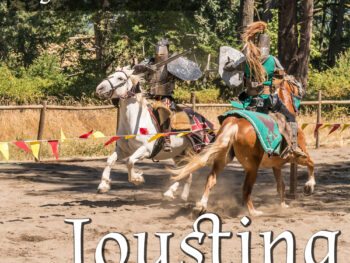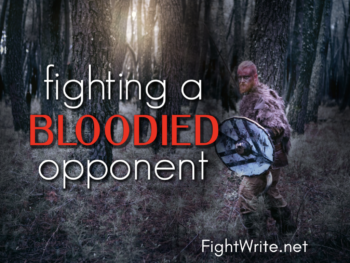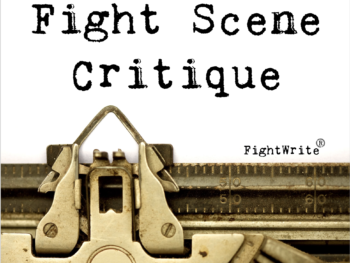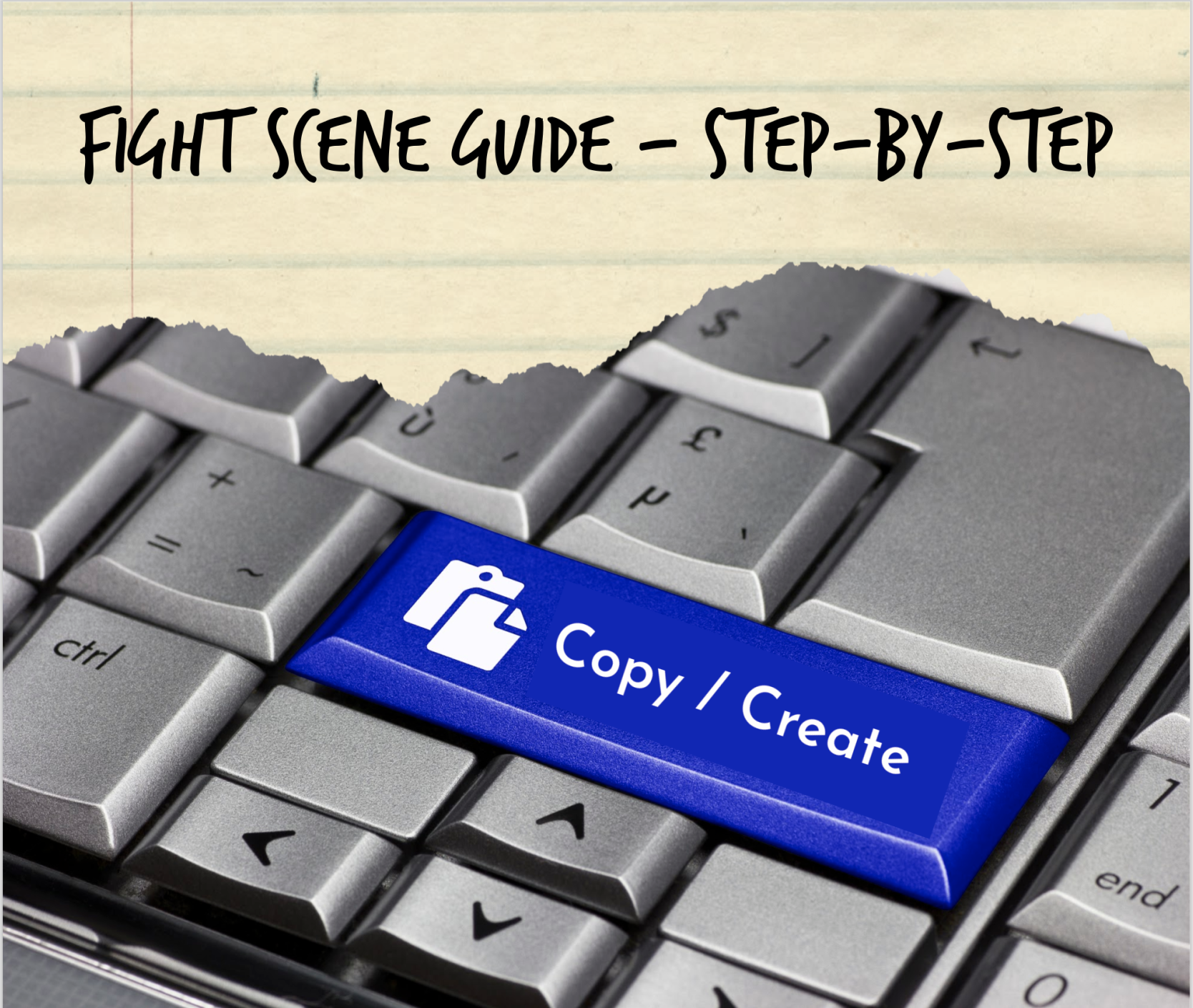More than any genre, I mentor writers of Speculative Fiction. You know, sci fi, fantasy, horror, superheroes, all the wonderfully weird stuff. So, fighting monsters is a subject near and dear to my heart. In fact, I’ve probably helped characters kill more monsters than men.
There are some monsters that come with a ready-made strategy. Anyone writing zombies, vampires and/or werewolves has an idea of what it will take to win the day. But if the creature is peculiar to the work, it may seem more complicated to find a way to victory.
Thankfully, when it comes to combat, there are some basic principles that hold true regardless of character, setting or genre of the work. There are three in particular that I personally keep front of mind. And, because all three are principles are taken from the book, The Art of War, they are well tested by time. I will first give the fundamental as penned thousands of years ago by Sun Tzu and then how it pertains to creating a fight scene.
Principle #1 – To subdue the enemy without fighting is the acme of skill.
Best the enemy, then beat them.
In writing a fight scene, a physical clash should be Plan B. The first line of attack should be one of wits. Win with strategy, then fight. Think about how Perseus killed Medusa. The warrior used Athena’s polished shield to view the reflection of Medusa’s face while also avoiding her gaze. Then, when the opportunity presented itself, he killed her with a sword.
Principle #2 – The opportunity of defeating the enemy is provided by the enemy himself.
Find the weakness in the strength.
In the movie A Quiet Place, what was the strength of the aliens? Their sense of hearing. What was their undoing? Their hearing. What makes zombies so formidable? They will stop at nothing to eat. What is their undoing? They will stop at nothing to eat! Zombies will walk right off a cliff if they see a human snack down below.
Principle #3 – To know your enemy, you have to become them.
To beat the man, you have to be the man.
If your character is fighting monsters, they must look at the fight as if they are the monster. Once mentally “monstered up,” they should ask their own self, what is my goal, how will I attack and what must I defend? This requires you as a writer knowing the monster as you do every other character, even if the monster has no character!
Ok, now that we’ve established a few core principles, let’s look at some broad scenarios. In each, we will look at how your character can use the situation to best the monster. Once the monster is outwitted, victory is more attainable. Because there are more monsters out there than you can shake a stick at, you the writer will have to decide on the manner of attack. If your work has supernatural properties, you should make your reader aware of those by immediately establishing normalcy. The first line of the of the Lord of the Rings trilogy reads that Bilbo Baggins would be celebrating his elevnty-first birthday. That shows us, the readers, that in the world of Bag End, abnormalcy is the norm.
Thankfully, even when the setting of a work is abnormal, even when the fight is against the supernatural, normal things in nature provide us with great reference. Some of the best resources for fighting monsters are actually right outside your door. Yes, when battling beasts, consider how actual beasts do battle. By nature, pun intended, prey animals use surroundings to negate predatory advantage. In my WDU class, What You Need to Know Before Writing Fight Scenes Battles and Brawls, I teach that where a fight takes place is more important than who is fighting. You know where I learned that? In my garage trying to get my cat out from under the car! Use the site of the fight to your hero’s advantage.
Scenarios
All right, here we go. Fighting monsters that are…
Large Monsters
Consider how small creatures on earth escape large predators. Mice run into holes. Rabbits bound into thickets. My cat just sits under the car! Animals instinctively know where they fit and predators don’t.
Humans can use the same strategy to best large monsters. Have we learned nothing from Jurassic Park? If a velociraptor is after you, climb into an air duct!
On the note of large monsters, if it is simply an oversized version of a common animal, it will still function like its smaller counterpart. For example, a fifty-foot scorpion will not be able to move its tail side to side any more than a five-inch scorpion. Why not? Because the metasoma of a scorpion is not constructed for horizontal movement.
Small Monsters
Small monsters are formidable. The deadliest creature on earth is the mosquito. To thwart tiny terrors, you have to “seal or conceal.” Your character must seal up any point of entry, conceal themselves from detection or both. Again, look at animals. They avoid insect bites with dense fur, mud or water or hide themselves with natural repellents.
Fast Monsters
When a monster is fast, remove the advantage of speed. Find terrain that isn’t favorable to speed such as ice or rocks, or an area with an abundance of impediments, twists or turns. The cheetah is the fastest land mammal. Where does it live? Wide open plains not jungles, mountains or crowded furniture stores.
Flying Monsters
In order to take flight, a winged animal must be able to spread its wings. A narrow space inhibits this process. And, although once in flight, the animal may be able to soar through a tight spot, they won’t easily land in it. Also, winged animals aren’t generally fleet of foot. Avoid open spaces and force the beast to the ground.
Swimming Monsters
By all means possible, the character should have a buffer that separates them from the water be it a boat, piece of wood or a dead whale carcass. And whether in the boat or bobbing in the deep blue, they must have a water-worthy weapon.
From that buffer, they should watch the water and look for any cues it provides the monster’s presence. After that, it will be up to you the writer to decide if the character is aware of how the animal hunts, what drives it away and what it takes to kill it. If the water monster is a massive Cthulhu/Kraken situation, that’s a whole other thing.
A Cthulhu/Kraken Situation
If your creature is fantastical without magical abilities, consider what animal/s it is like and the basic principles of those known animals. For example, quadrupeds cannot change direction quickly or easily go backward. Certain animals’ builds aren’t conducive to swimming. Clawed animals aren’t as steady on slick surfaces. If your created creature is an amalgam of several animals, battle the most dangerous characteristic first. Look for an animal with that same manner of attack.
I hope this gets the wheels of your monster brains turning. If you need any extra insight, my book has an entire chapter on battling robots, aliens and beasties. Give it a look.
Until the next round of FightWrite™, get blood on your pages.










First of all, this blog is AWSEOME! Totally what I need for my books, because pretty much all of them have at least one fight, and/or violence of some sort.
Which brings me to my question: do you think a character, trained in wrestling to a degree of proficiency, could kill a dragon about the size of a horse by breaking its neck? I think he could if he was fast enough, but I’d like a second opinion to make sure. ^-^
Hi Little Chronicler! Sorry it has taken so long to reply. It’s hard to fish through the mountains of spam.
In short, no. The only hold I can think that could be used is a rear naked choke which is problematic. If the dragon is about the size of a horse a wrestler couldn’t reach all the way around the neck. The dragon would have to be the size of a colt or calf to do that. But, even then, I dont think it would happen as the dragon could get the wrestler off just by flapping it’s wings. It wouldn’t even have to have to get loft. The wrestler would be smacked around pretty good!
I love questions like these!!!! Thank you!
Проблемы с водой в доме? Услуги сантехника от нашей компании вернут вам спокойствие
вызов сантехника спб https://www.vizov-santehnikavspb.ru .
Free AI cover letter generator – download and edit effortlessly
cover letter converter createcoverletterfree.com .
Откройте для себя новые возможности тренировок с надежными тренажерами Матрикс
купить тренажеры matrix https://www.matriks-trenajeri.ru .
Оформите займы онлайн и получите деньги уже сегодня
онлайн займ https://www.vsezajmyonline.kz/ .
Рулонный экран для проектора – компактное решение для небольших помещений
экран для видеопроектора купить http://www.proekcionnye-ehkrany01.ru/ .
Микрокредиты до зарплаты – деньги быстро и без хлопот
микрокредиты https://www.allmikrokredits.kz .
Клининг с бесплатной дезинфекцией: Уничтожим 99% бактерий в ванной и кухне
сайт клининговой компании http://www.klining-v-moskve0.ru .
Клининг Москва: Фиксируем стоимость до начала — никаких неожиданных доплат
рейтинг клининговых компаний в москве https://kliningovye-kompanii-1.ru/ .
Клининг, который работает на вас: уборка, дезинфекция и помощь с мусором по низким ценам
цены на клининговые услуги http://www.stoimost-kliningovykh-uslug.ru .
A breathtaking drone light show designed to elevate your celebration with vivid and synchronized visuals
light drones 1drone-show.com .
Контрактный двигатель – мощность и надежность без лишних затрат
контрактные двигателя https://www.kontraktnye-dvigateli3-moskva.ru .
Как купить бу запчасти дешевле и с гарантией? Разбираем все нюансы
запчасти бу https://zapchasti-bu3-moskva.ru .
Быстрый микрокредит онлайн – моментальное одобрение и удобное погашение
микрокредиты на карту http://www.mikrokredityvsem.kz/ .
Лучшие предложения микрокредитов – сравните и выберите выгодные условия
микрокредит http://www.allmikrokredits.kz .
Оформление займа онлайн без посещения офиса – деньги сразу на карту
займ https://news365.kz .
Забудьте о грязи Клининг в Москве с выездом на дом — удобный график и индивидуальный подход к каждому клиенту
рейтинг клининговых компаний рейтинг клининговых компаний .
Клининг с безопасными средствами: Без резких запахов и аллергенов — идеально для семей с детьми
клининг в москве http://klining-v-moskve0.ru/ .
Полный ассортимент услуг: Пропуск на МКАД для любых видов транспорта и сроков действия
пропуск мкад https://propusk-na-mkad-v-moskvu1.ru .
Клининг Москва: Уборка по индивидуальному плану — учитываем каждое пожелание
клининговые компании москвы https://kliningovye-kompanii-1.ru/ .
Цены на клининг для бизнеса: поддерживайте чистоту в офисе без лишних расходов
услуги клининга цена https://www.stoimost-kliningovykh-uslug.ru .
Pinco Casino – ən yüksək bonuslar və real qazanc imkanı ilə ən yaxşı onlayn kazino
Pinco casino Azerbaycan Pinco casino Azerbaycan .
Online rubber stamp creator – free tool to make official and personal stamps instantly
online stamp design maker online stamp design maker .
Контрактный двигатель без скрытых дефектов – проверенные моторы с гарантией
купить мотор [url=https://www.kontraktnye-dvigateli3-moskva.ru]https://www.kontraktnye-dvigateli3-moskva.ru[/url] .
Авторазборка с гарантией возврата – покупайте запчасти без риска
авторазборка https://avtorzborka3-moskva.ru .
Need a business rubber stamp? Make one online for free in minutes
stamp maker online https://www.stamps1-creator.com .
It’s really a great and useful piece of info. I’m satisfied that you simply shared this helpful information with us. Please keep us up to date like this. Thanks for sharing.
Энергоэффективные светодиодные светильники от производителя с доставкой по всей России
светильник светодиодный производство http://www.proizvodstvo-svetodiodnih-svetilnikov.ru/ .
Оформляем пропуск в центр Москвы для Газели с учетом всех норм и правил
можно ли на газели в центр москвы можно ли на газели в центр москвы .
Instant SMS verification – receive SMS online for social media and apps
disposable phone number disposable phone number .
Надежные парогенераторы Unisteam com для строительных и промышленных работ
ооо завод паровых установок юнистим unisteam com
Сантехнические услуги в СПб по выгодным ценам с гарантией качества
прайс на услуги сантехника в спб http://remont-santehniki-price.ru/ .
Сантехник СПб – цены на срочные аварийные работы
цены на сантехнические работы http://santeh1-montazh-price.ru/ .
Экран для проекторов с широким углом обзора – комфортный просмотр с любой точки
экран для проектора на электроприводе http://proekcionnye-ehkrany0.ru/proekcionnye-ekrany/ekran-dlya-proektora-s-elektroprivodom/ .
Полный курс реабилитации от зависимости в наркологической клинике с поддержкой психологов
клиника алкоголизма https://platnaya-narkologicheskaya-klinika-01.ru/ .
Гарантия качества на сантехнические услуги в СПб – расценки и прайс
услуги сантехника цена https://24-santehniki-price.ru/ .
Гарантированное качество сантехнических работ в СПб – цены на услуги
сколько стоит вызов сантехника сколько стоит вызов сантехника .
Устойчивость, комфорт, дизайн – лучшие модели мебели для кафе
мебель для общепита http://www.mebel-dlya-kafe.ru/ .
Лучшие ремонтные компании – рейтинг надежных исполнителей и рекомендации
ремонт квартир под ключ рейтинг https://www.remont-kvartir-reiting.ru/ .
Безопасность и эффективность: технологическая карта на погрузочно-разгрузочные работы от экспертов
технологическая карта погрузочно разгрузочных работ вручную http://www.tekhnologicheskie-karty.ru .
Реальные оценки клиентов: рейтинг компаний по ремонту квартир
топ компаний по ремонту квартир http://www.remont-kvartir-reiting.ru/ .
Клининг Москва: рейтинг агентств с полным спектром услуг и прозрачными ценами
клининговые компании москва рейтинг kliningovye-kompanii-msk1.ru .
Популярные локации и цены на отдых в Абхазии в 2025 году
абхазия отдых 2025 https://otdyhabhazia01.ru .
Проведение выездной поверки манометров без задержек и бюрократии
поверка манометров в москве https://poverkamanomterov.ru/ .
Платная наркологическая клиника по лечению алкогольной зависимости с гарантией результата
наркология лечение алкоголизма http://www.platnaya-narkologicheskaya-klinika-0.ru/ .
Все услуги сантехника в одном месте с прозрачным ценообразованием
вызов сантехника петергоф https://vyzov-santekhnika1-spb.ru/petergof/ .
Восстановление душевного равновесия — психиатрическая клиника СПб поможет
психиатрическая клиника петербурга https://klinika-psikhiatrii-spb.ru .
Лучшие условия для вывода из запоя в стационаре или на дому
вывод из запоя круглосуточно цены http://www.vyvod-iz-zapoya-spb-1.ru/ .
F*ckin¦ amazing issues here. I¦m very happy to look your article. Thank you a lot and i’m having a look ahead to touch you. Will you kindly drop me a mail?
Please let me know if you’re looking for a writer for your weblog. You have some really good posts and I think I would be a good asset. If you ever want to take some of the load off, I’d absolutely love to write some content for your blog in exchange for a link back to mine. Please send me an e-mail if interested. Regards!
What i do not understood is if truth be told how you’re not really much more well-preferred than you might be now. You’re so intelligent. You already know thus significantly in relation to this topic, produced me individually imagine it from so many numerous angles. Its like women and men aren’t fascinated except it’s one thing to accomplish with Woman gaga! Your own stuffs great. At all times care for it up!
I’m impressed, I must say. Actually hardly ever do I encounter a weblog that’s each educative and entertaining, and let me inform you, you might have hit the nail on the head. Your idea is outstanding; the issue is something that not sufficient people are speaking intelligently about. I’m very completely happy that I stumbled throughout this in my seek for something relating to this.
Good info. Lucky me I reach on your website by accident, I bookmarked it.
This really answered my problem, thank you!
Энергоэффективные каркасные дома — комфорт и экономия каждый день
дома каркасные под ключ москва https://karkasnye-doma-msk-pod-kluch0.ru/ .
Outstanding post, I conceive website owners should acquire a lot from this weblog its really user pleasant.
Howdy would you mind sharing which blog platform you’re working with? I’m looking to start my own blog in the near future but I’m having a hard time choosing between BlogEngine/Wordpress/B2evolution and Drupal. The reason I ask is because your layout seems different then most blogs and I’m looking for something completely unique. P.S Apologies for being off-topic but I had to ask!
Saved as a favorite, I really like your blog!
Thanks a bunch for sharing this with all of us you actually know what you’re talking about! Bookmarked. Kindly also visit my site =). We could have a link exchange contract between us!
Thanks so much for providing individuals with such a wonderful opportunity to read articles and blog posts from here. It is often very kind and as well , jam-packed with a lot of fun for me personally and my office colleagues to search your website nearly three times in 7 days to see the newest items you will have. And lastly, I’m usually astounded considering the fantastic things you serve. Selected 4 tips in this article are essentially the best I have ever had.
I would like to thnkx for the efforts you have put in writing this blog. I’m hoping the same high-grade site post from you in the upcoming also. In fact your creative writing abilities has encouraged me to get my own website now. Really the blogging is spreading its wings rapidly. Your write up is a good example of it.
I truly enjoy reading on this site, it has got good blog posts. “Words are, of course, the most powerful drug used by mankind.” by Rudyard Kipling.
you’ve an important blog right here! would you prefer to make some invite posts on my weblog?
Hi, Neat post. There is a problem with your site in internet explorer, would test this… IE still is the market leader and a large portion of people will miss your excellent writing due to this problem.
Wonderful work! This is the type of information that should be shared around the internet. Shame on Google for not positioning this post higher! Come on over and visit my website . Thanks =)
Fantastic beat ! I would like to apprentice at the same time as you amend your web site, how can i subscribe for a weblog website? The account helped me a appropriate deal. I were a little bit acquainted of this your broadcast provided bright clear concept
Необычные цветочные композиции с доставкой и упаковкой в подарок
букет для именинницы cvety-s-dostavkoi.ru/rubric/buket-na-den-rozhdeniya .
Terrific work! This is the type of info that should be shared around the internet. Shame on Google for not positioning this post higher! Come on over and visit my website . Thanks =)
Wonderful work! This is the type of information that should be shared around the internet. Shame on Google for not positioning this post higher! Come on over and visit my website . Thanks =)
I must show my thanks to this writer for bailing me out of this condition. Because of scouting throughout the world wide web and coming across solutions that were not powerful, I assumed my entire life was over. Being alive minus the answers to the issues you’ve solved by means of this short post is a crucial case, as well as ones which could have adversely damaged my entire career if I hadn’t encountered your web page. Your good talents and kindness in dealing with all areas was valuable. I don’t know what I would’ve done if I hadn’t come across such a stuff like this. I can at this moment look forward to my future. Thank you very much for your specialized and result oriented help. I won’t think twice to recommend your blog post to anybody who should receive guidance about this problem.
you are really a good webmaster. The website loading speed is incredible. It seems that you’re doing any unique trick. Also, The contents are masterwork. you have done a wonderful job on this topic!
Качественные бу запчасти на складе авторазборки — быстро и удобно
разборка http://www.avtorazborka1-minsk.ru/ .
Whats Going down i’m new to this, I stumbled upon this I’ve discovered It positively useful and it has helped me out loads. I am hoping to give a contribution & assist different users like its aided me. Good job.
Быстрый подбор бу запчастей по марке, модели и VIN-коду
запчасти для иномарок бу https://zapchasti-bu1-minsk.ru .